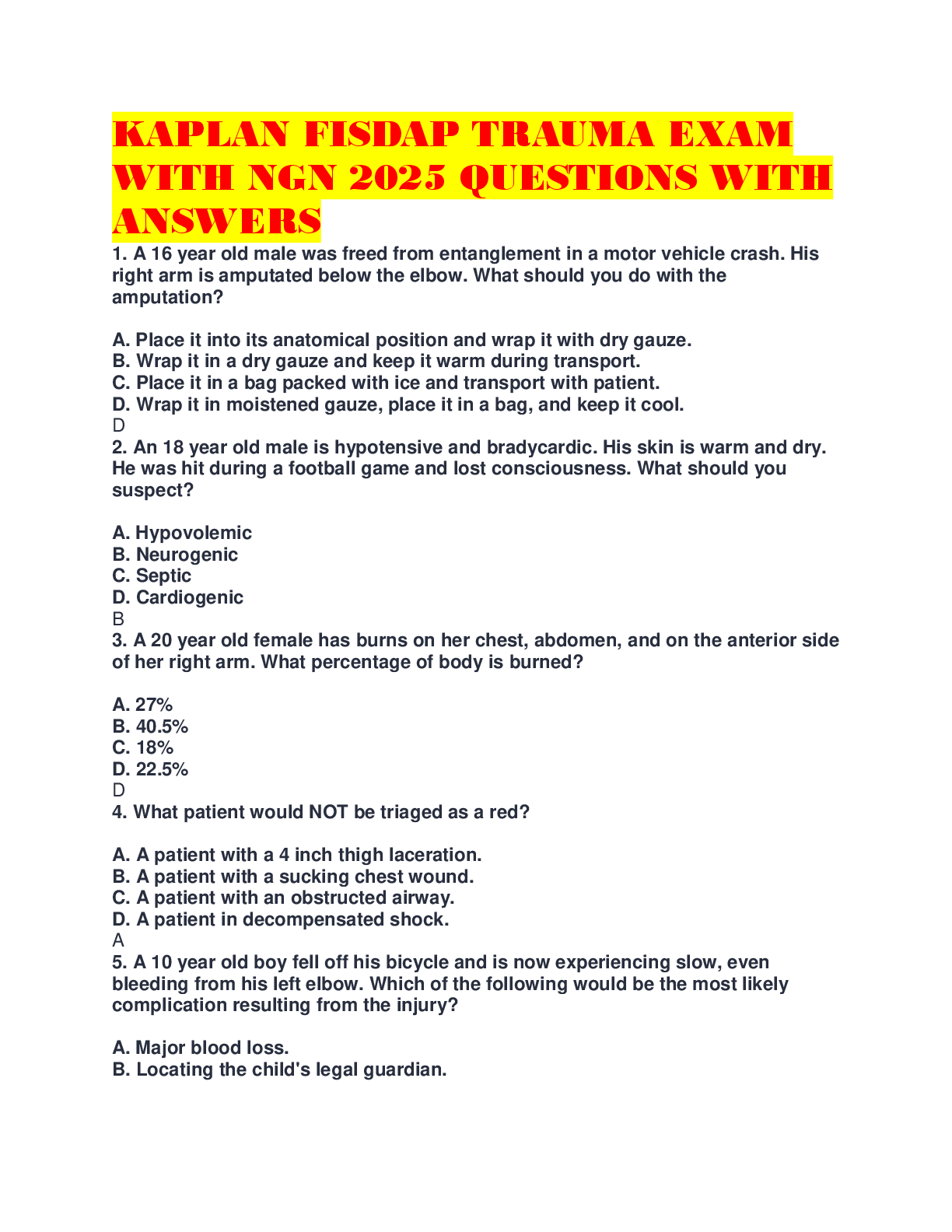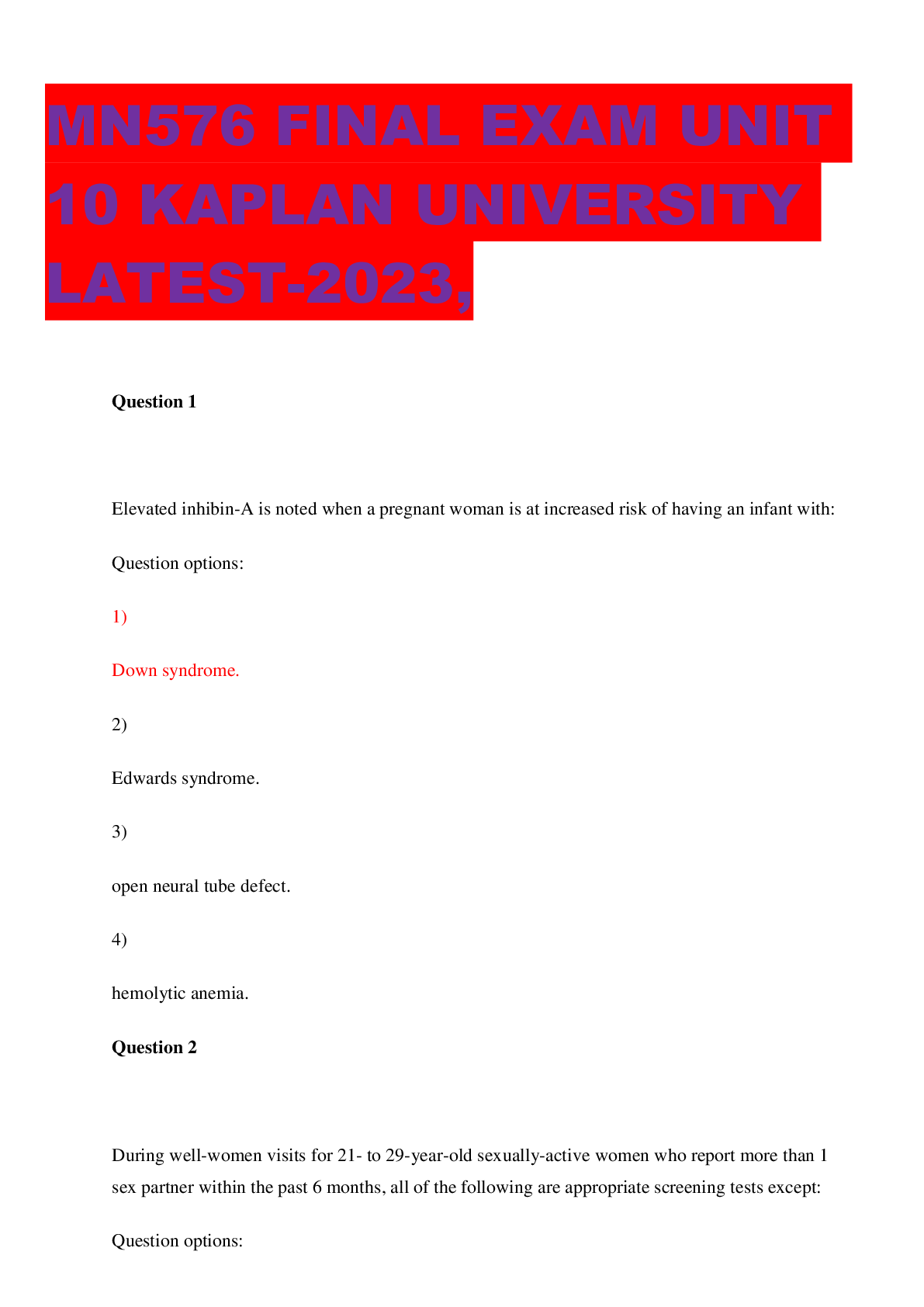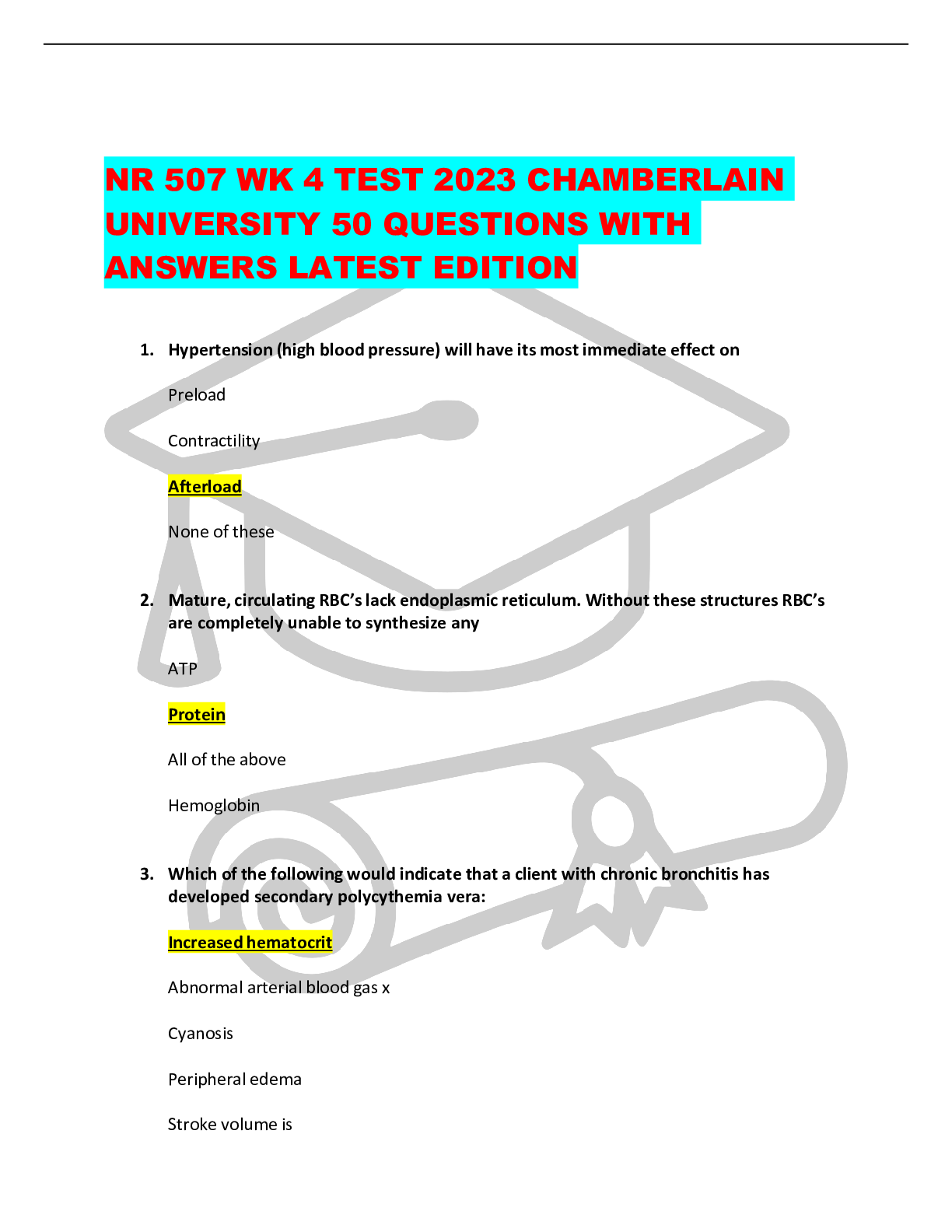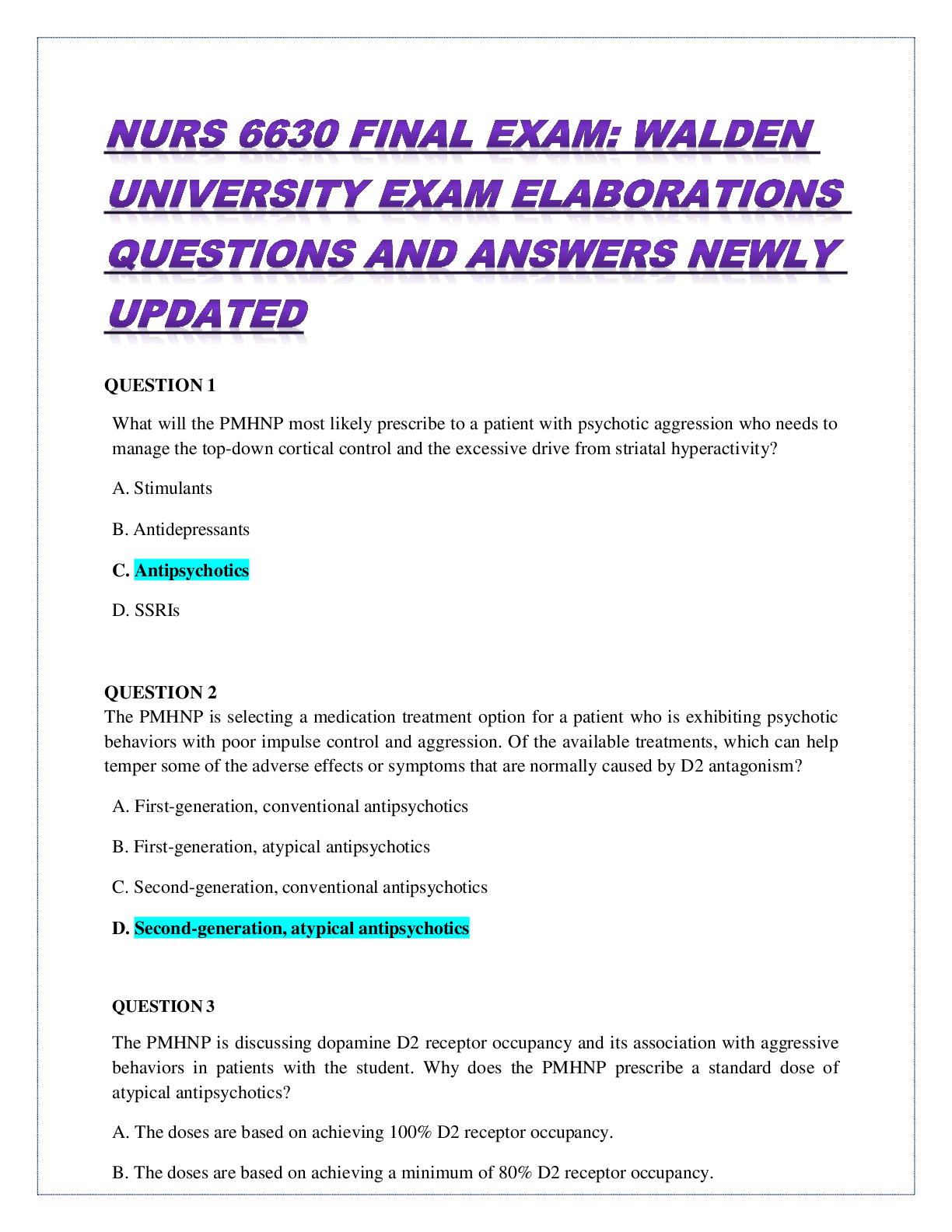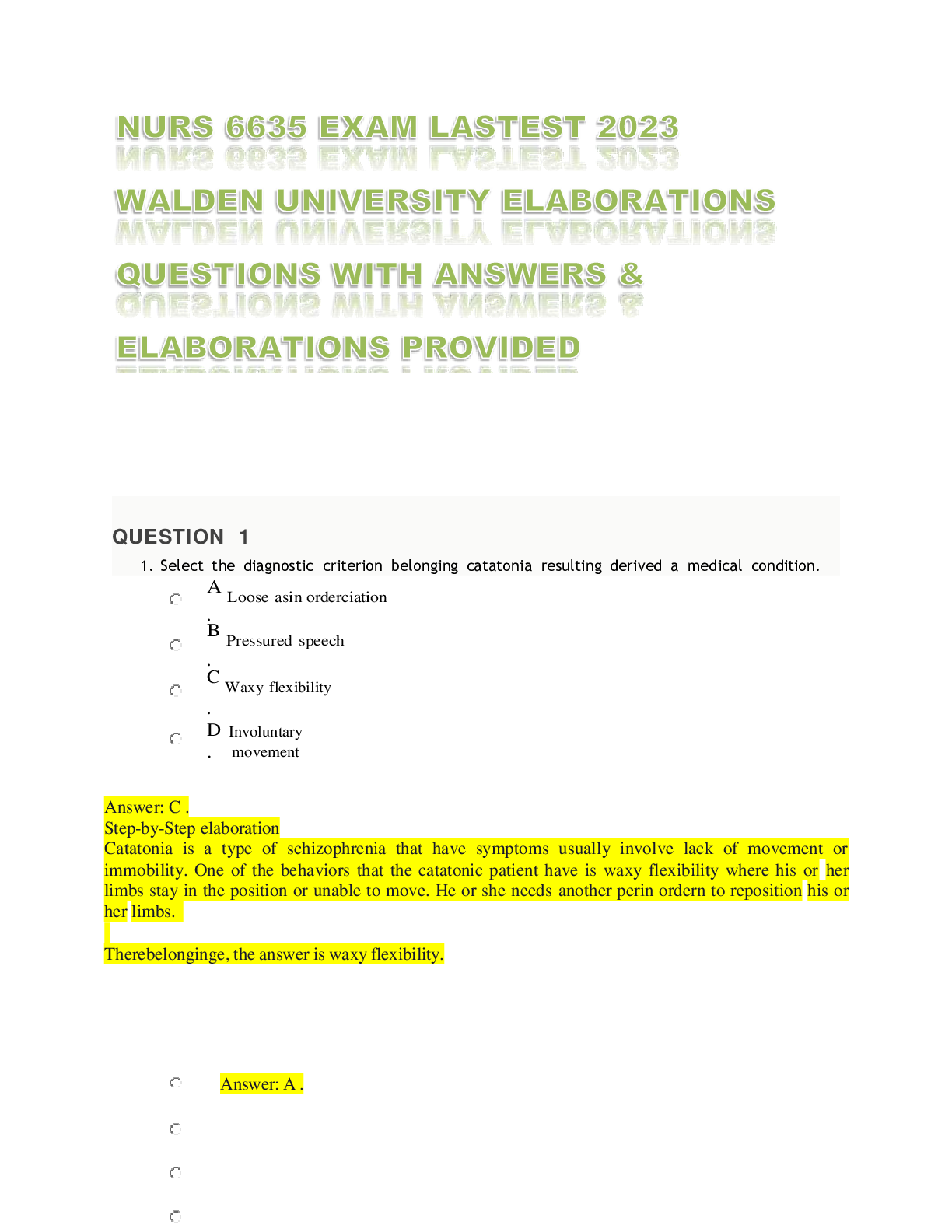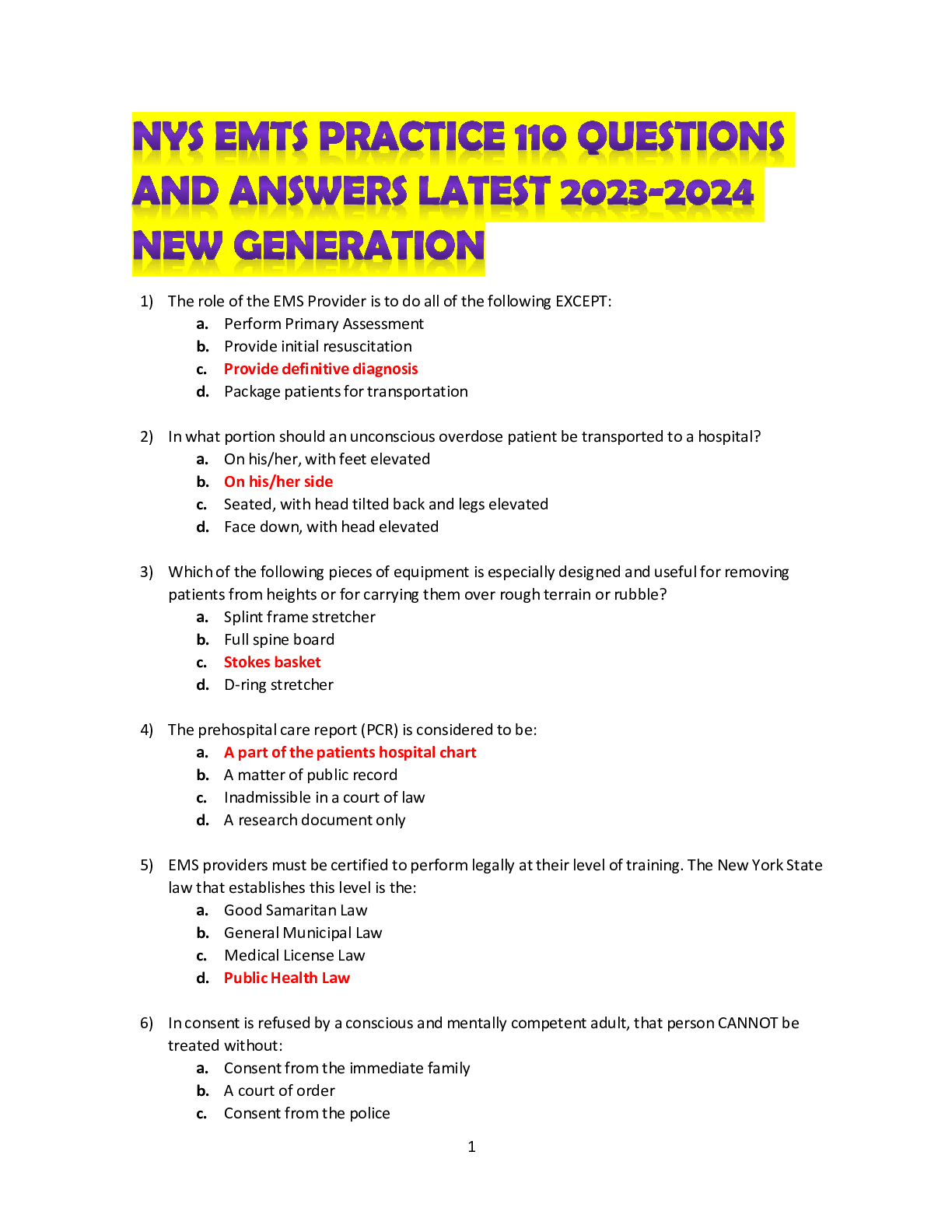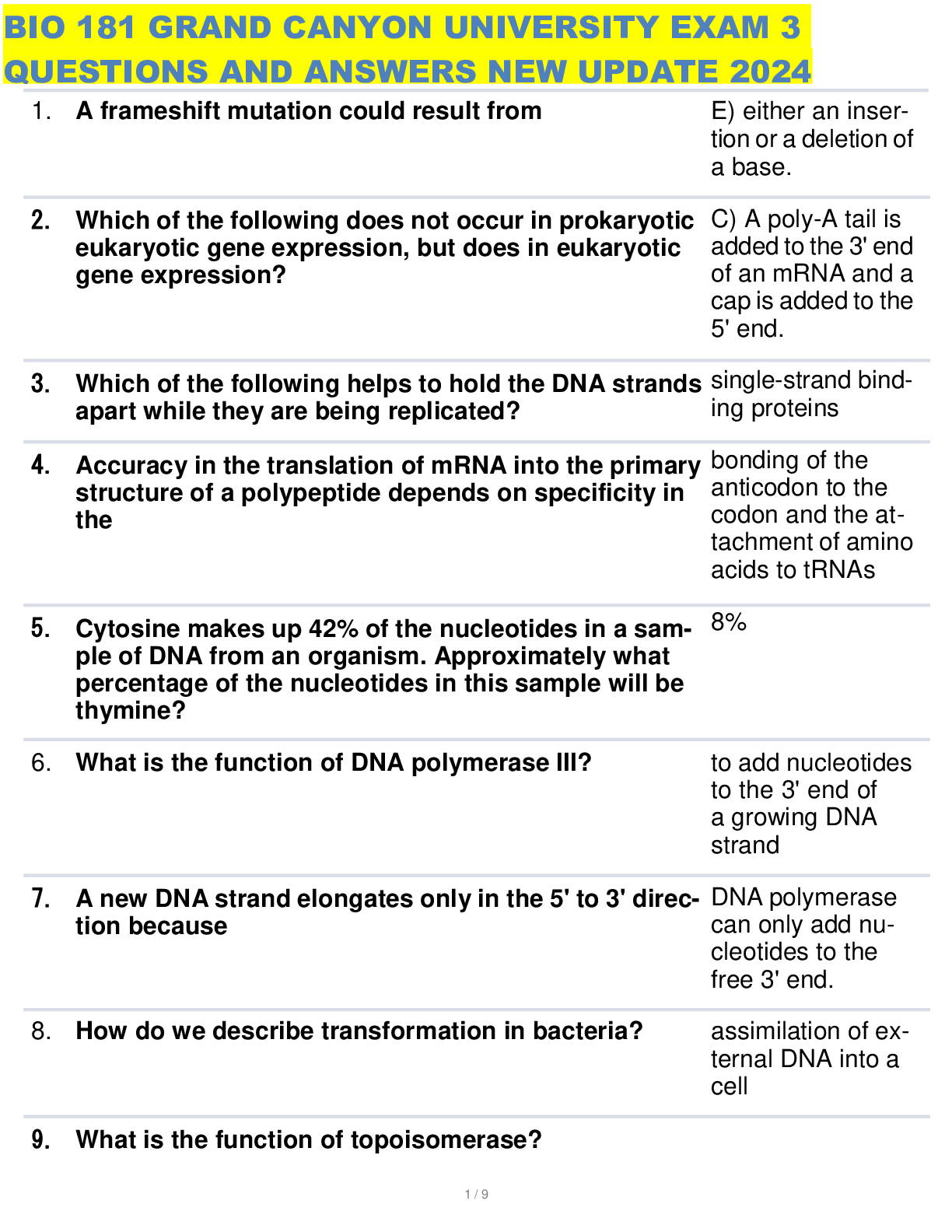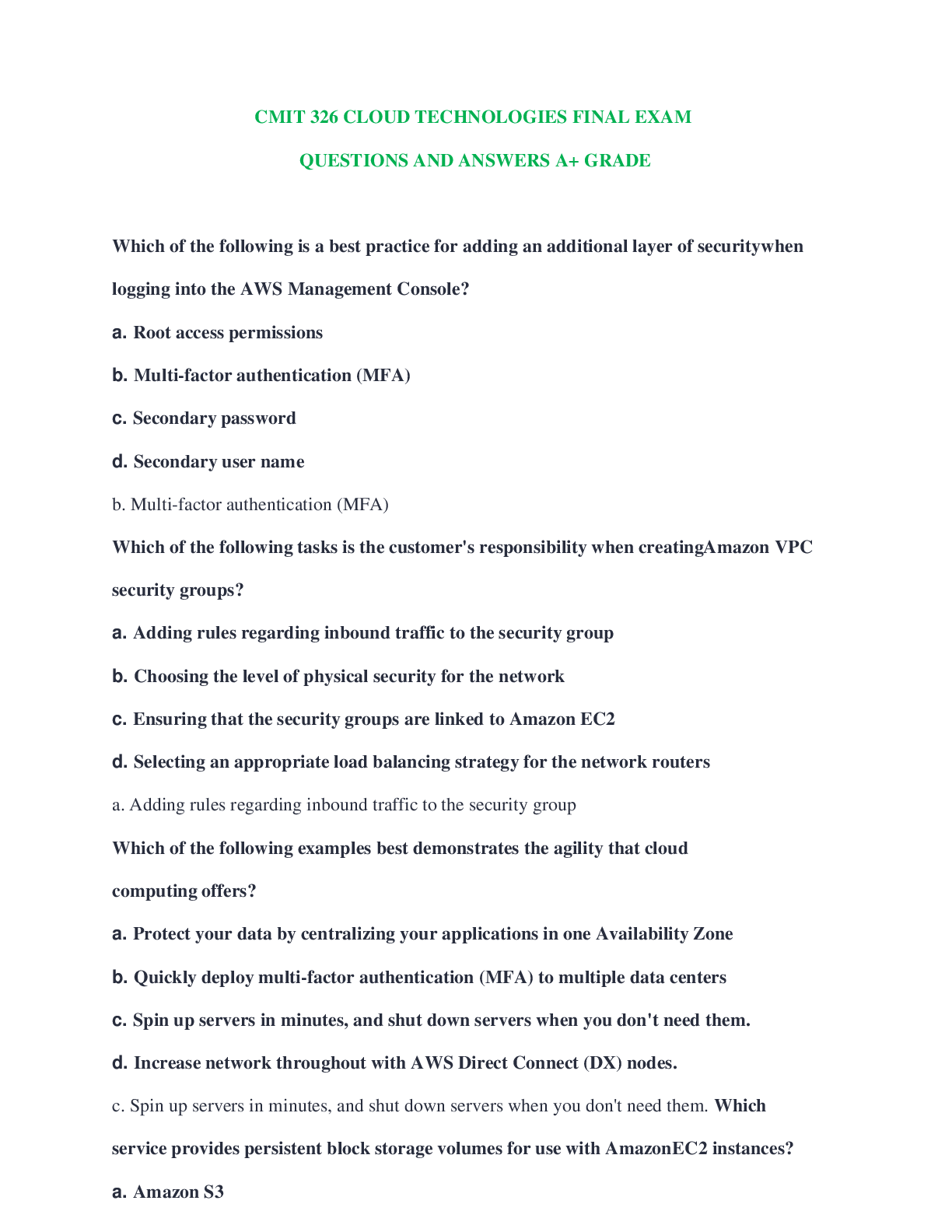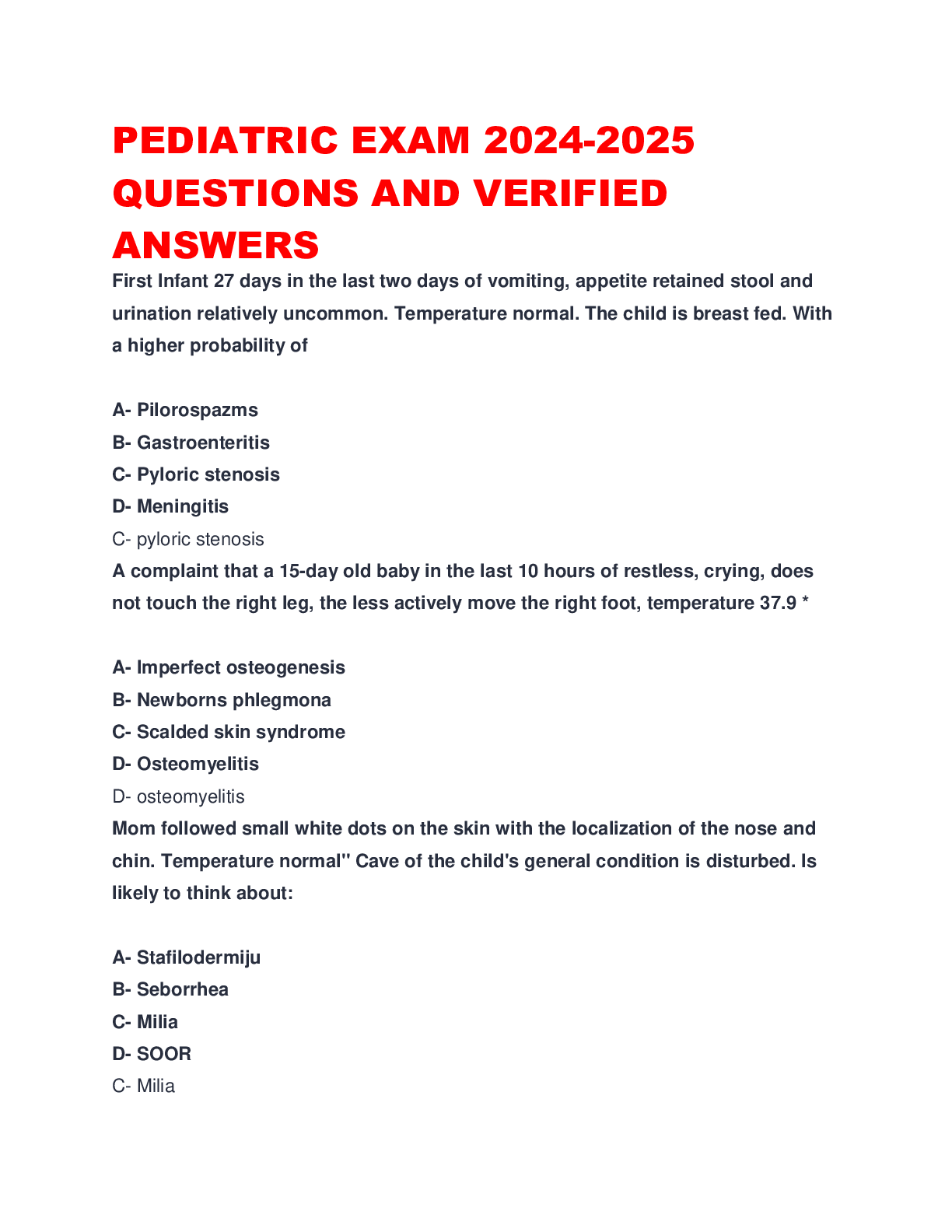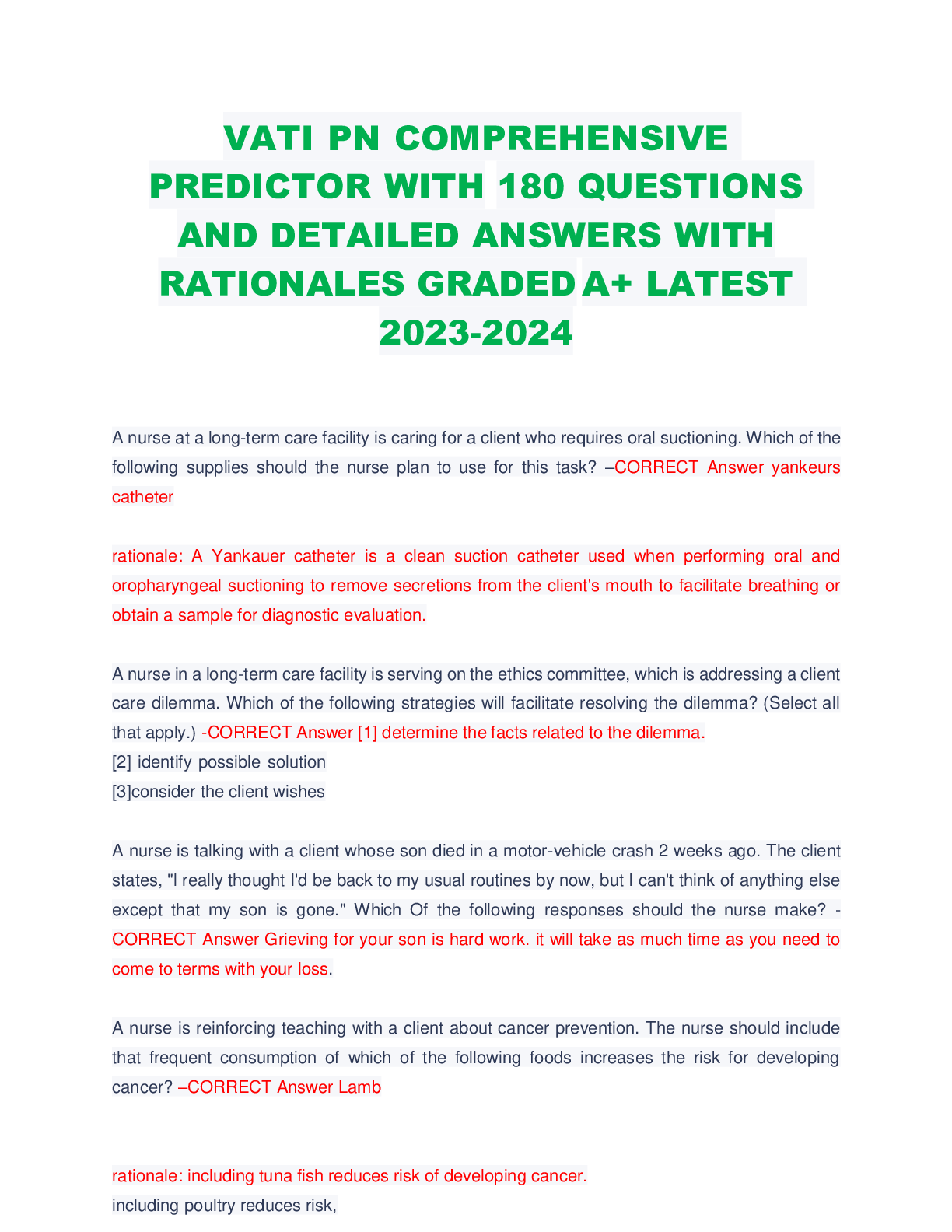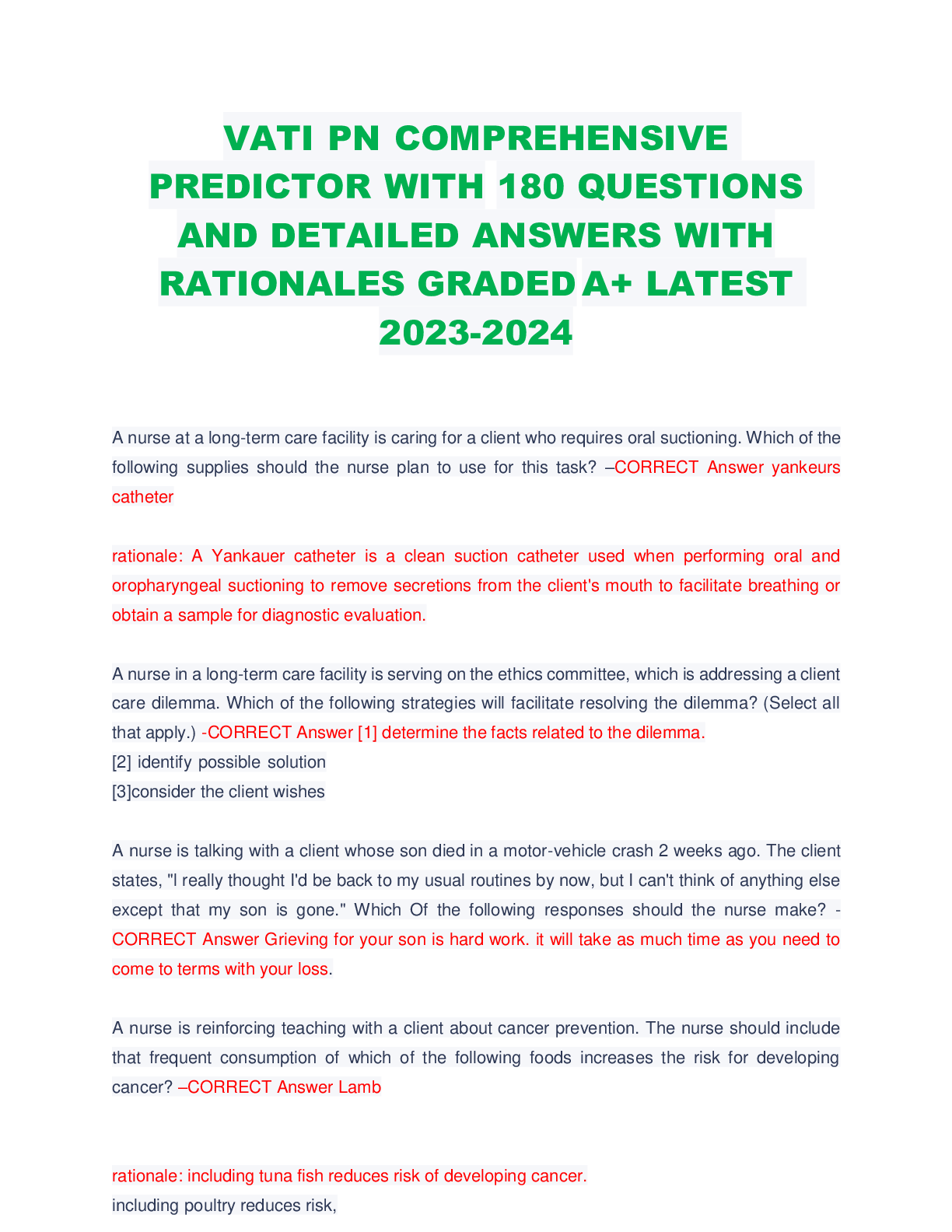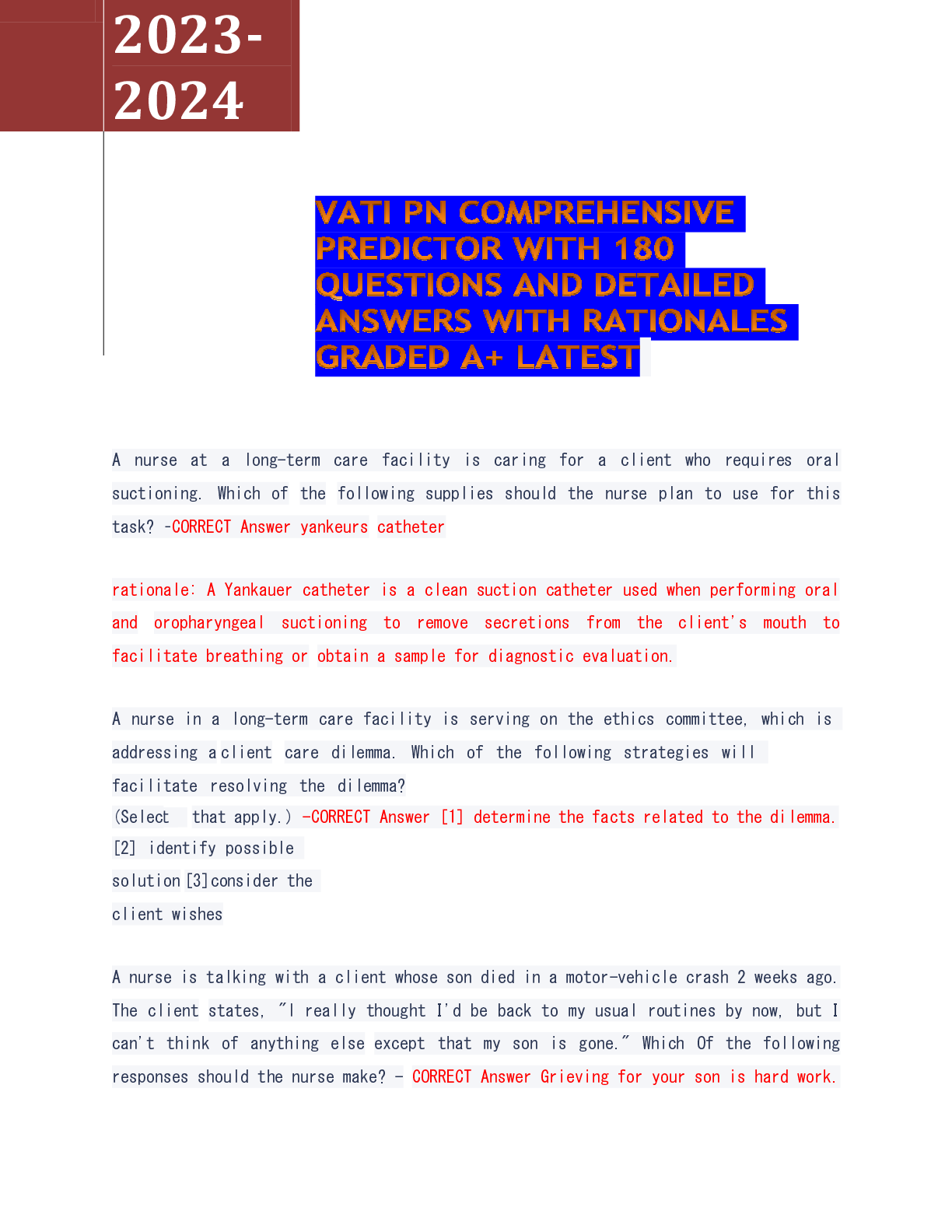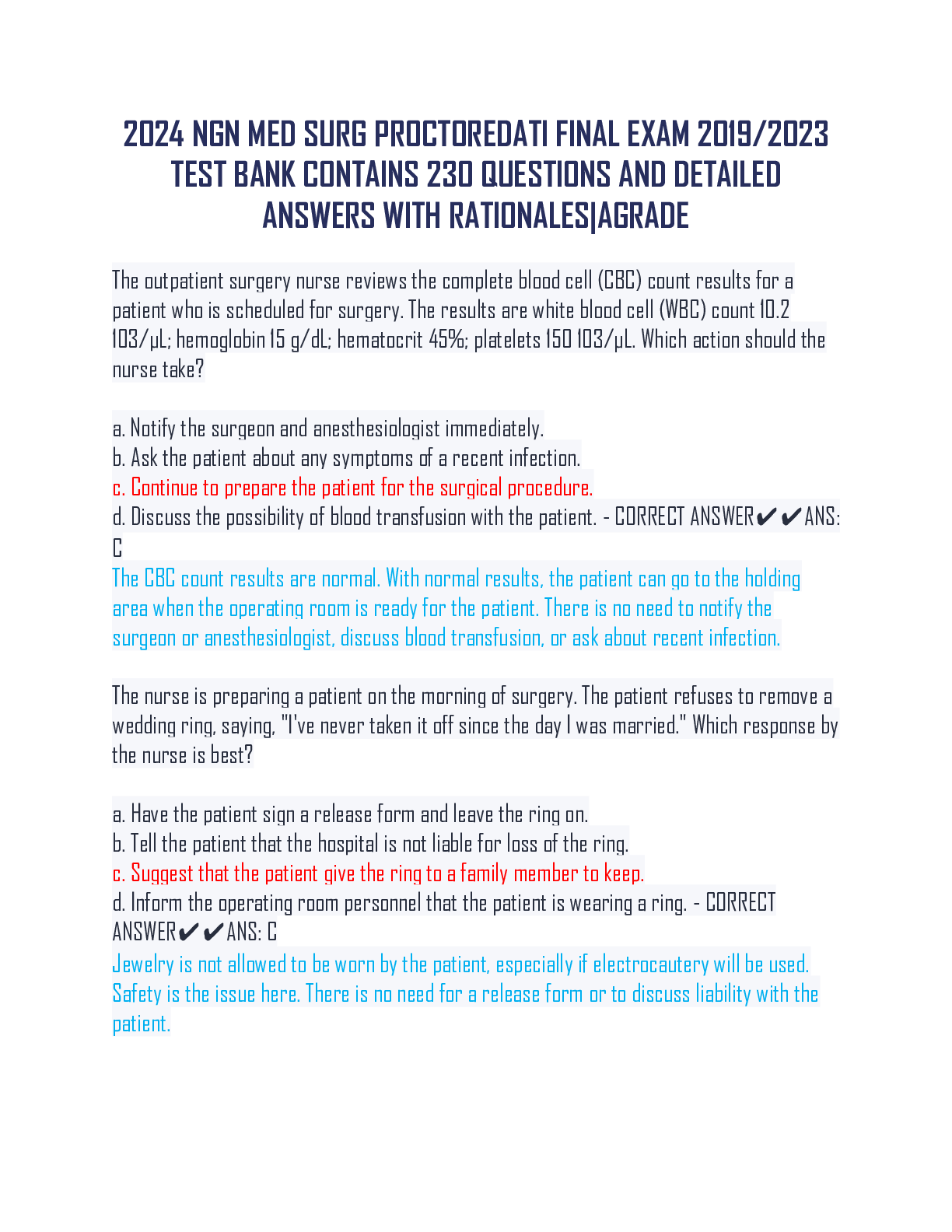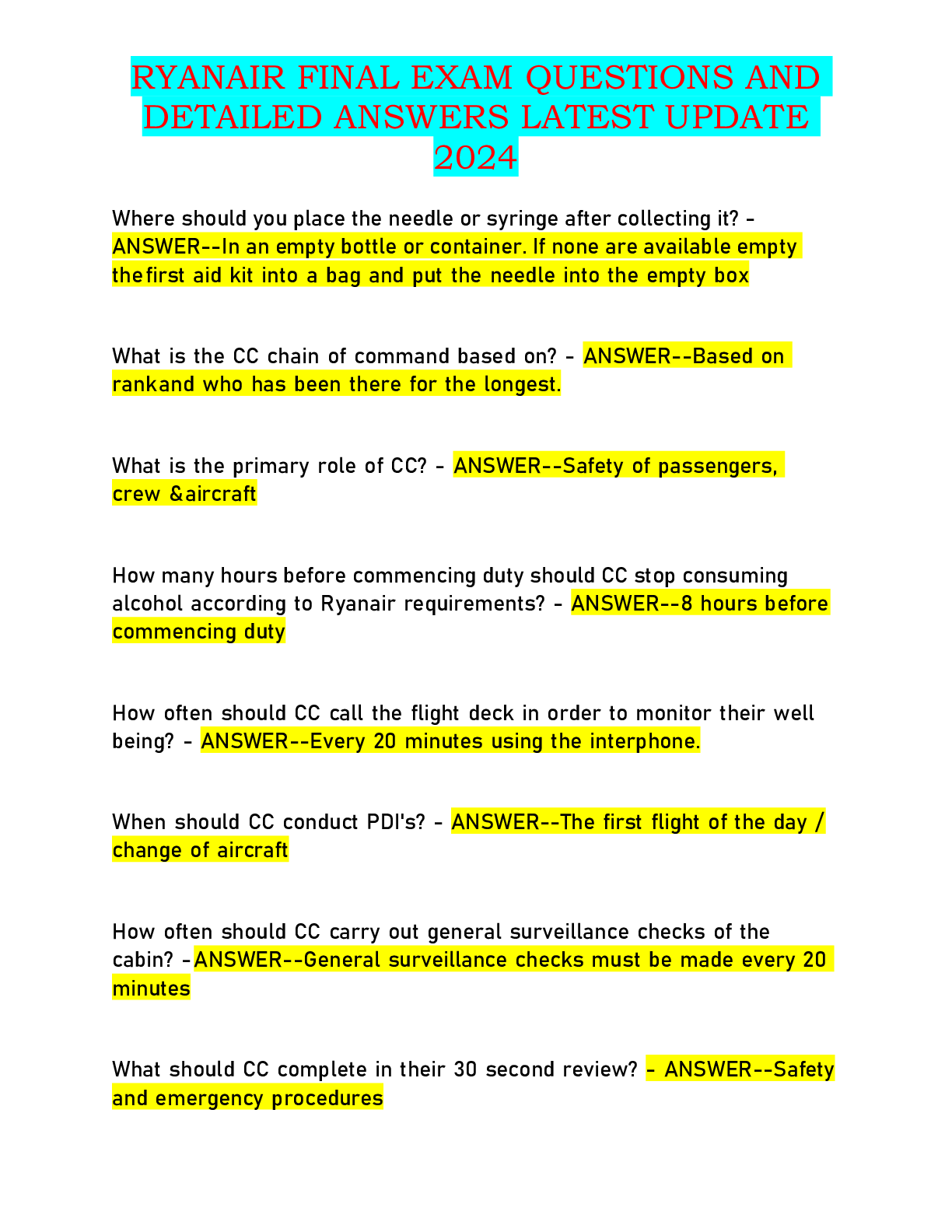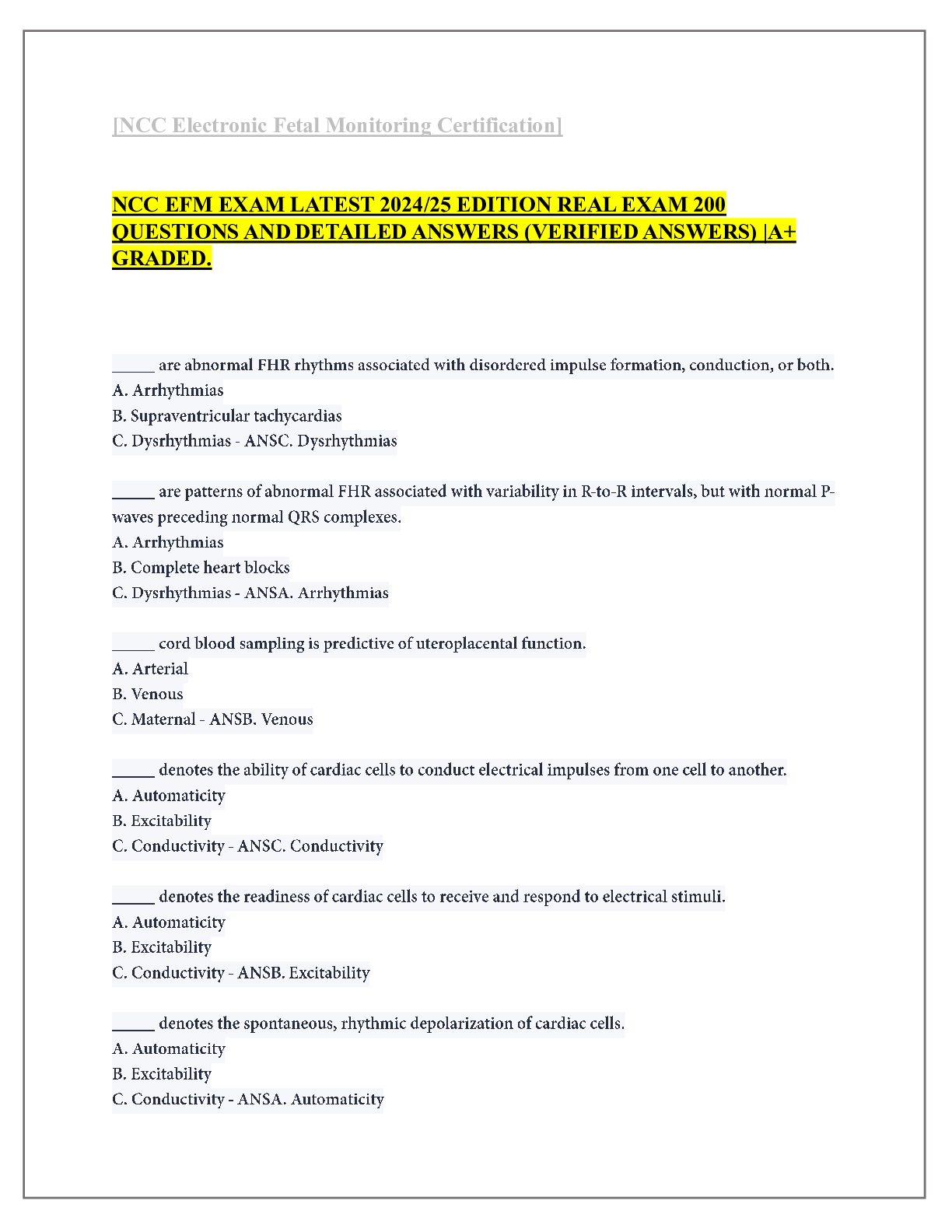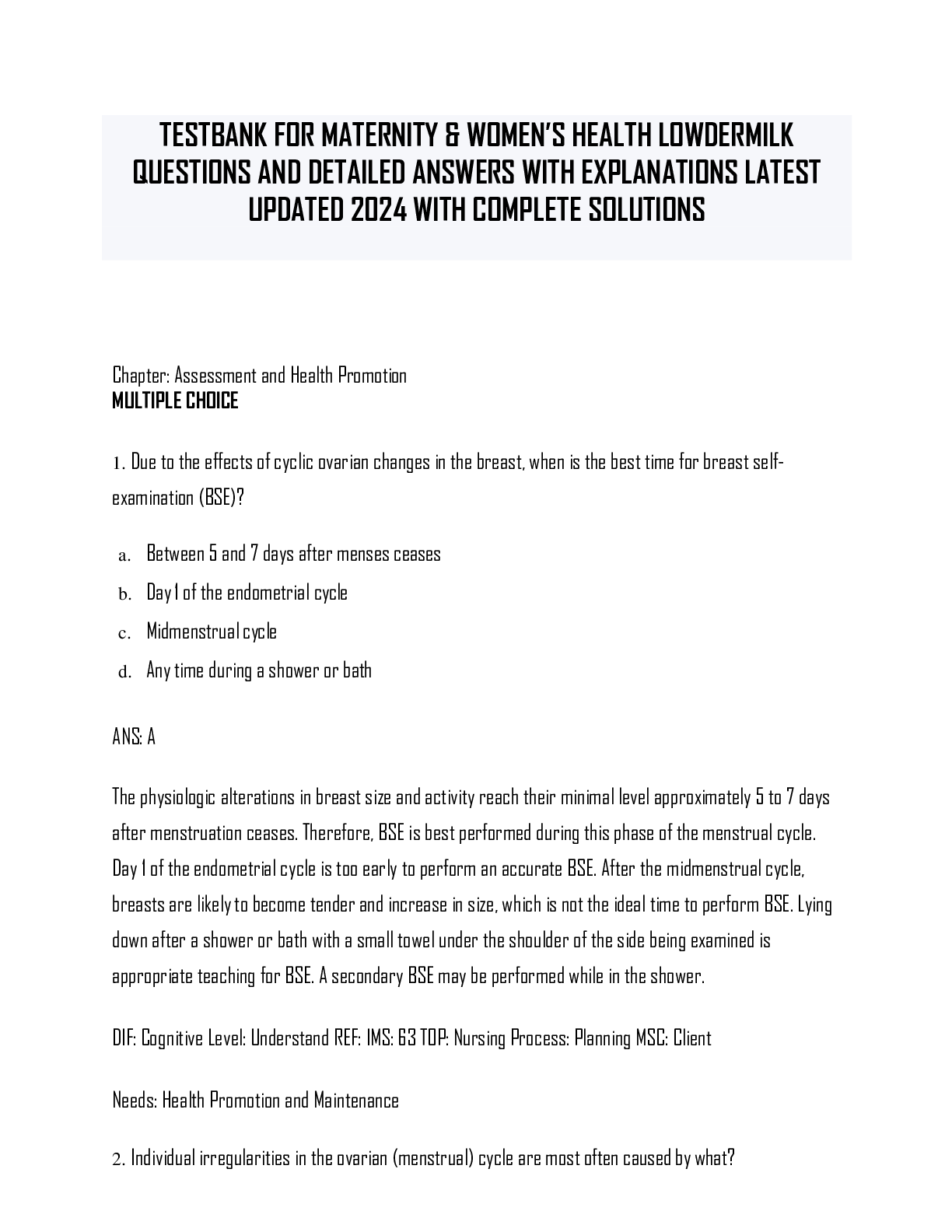Clinical Medicine > EXAM > ATI CLINICAL JUDGEMENT ASSESSMENT 2.0 QUESTIONS AND DETAILED ANSWERS 2024 WITH NGN (All)
ATI CLINICAL JUDGEMENT ASSESSMENT 2.0 QUESTIONS AND DETAILED ANSWERS 2024 WITH NGN
Document Content and Description Below
ATI CLINICAL JUDGEMENT ASSESSMENT 2.0 QUESTIONS AND DETAILED ANSWERS 2024 WITH NGN A nurse is caring for a client who has been wheezing. The nurse asks an assistive personnel (AP) to use a stethosc... ope and listen to the client's lung sounds to determine if their wheezing has improved. This is an example of which of the following concepts? -Delegation of the right circumstance -Delegation of the wrong task -Delegation to the right person -Delegation of the wrong time -Delegation of the wrong task Delegating a AP to use a stethoscope and listen to lung sounds is inappropriate as it is not within the range of function of an AP. This action involves clinical reasoning and should be delegated to a nurse. Not A, as using a stethoscope and listening to lung sounds is not within the range of function of an AP. The circumstances of this assignment involves assessment or data collection, which require clinical reasoning and should be delegated to a nurse. Not C, as using a stethoscope and listening to lung sounds is not within the range of function of an AP. This action involves clinical reasoning and should be delegated to a nurse. Not D, as the nurse does need to have this task completed at this time. However, this assignment is not within the range of function of an AP and should be delegated to a nurse. A charge nurse is preparing to discuss critical thinking skills with a group of newly licensed nurses. Which of the following skills should the nurse plan to include in the discussion? Select all that apply. -Inspection -Implementation -Inference -Creativity -Inductive reasoning -Inference Inference is a skill that is associated with critical thinking that the nurse can use as a part of higher-level thinking. -Creativity Creativity is a skill that is associated with critical thinking. The nurse can use creativity as a part of higher-level thinking to critically analyze problems and develop solutions. -Inductive reasoning Inductive reasoning is a skill that is associated with critical thinking that the nurse can use as a part of higher-level thinking. Not A, as inspection is part of the assessment step of the RN nursing process in which the nurse observes the client for expected and unexpected findings. Not B, as implementation is the fourth step of the nursing process that involves taking action to provide nursing care as outlined in the client's plan of care. A nurse asks a client to rate their current level of pain using a scale of 0 to 10 after administering pain medication 30 min ago. Which of the following steps of the nursing process is the nurse performing? -Evaluation -Implementation -Analysis -Planning -Evaluation The nurse is using the evaluation step of the nursing process by collecting subjective data from the client using an established pain scale to compare the client's current pain level to their original level of pain. Not B, as in the implementation step of the nursing process, the nurse carries out interventions that were planned for the client. An example of the implementation step would be the administration of pain medication to the client. Not C, as in the analysis step of the nursing process, the nurse reviews client findings and determines the client's problems in order to develop the client's plan of care. Not D, as in the planning step of the nursing process, the nurse develops interventions to treat or manage the client's identified problems. A nurse is reviewing methods created to assist nurses is using evidence-based practice. Which of the following is a NCSBN model that can assist the nurse with critical thinking and decision making? -Clinical judgement -Critical thinking -Clinical reasoning -SMART goal -Clinical judgement The Clinical Judgement Model was developed to assist nurses in using evidence-based practice to think critically and make decisions. Not B, as critical thinking is the skill of learning to analyze and interpret data and is an element of the NCSBN's Clinical Judgement Model for nurses. Not C, as clinical reasoning is a constant and repeated action that nurses use in practice. Clinical reasoning influences the NCSBN"s Clinical Judgement Model for nurses. Not D, as the acronym SMART represents a goal-setting framework (specific, measurable, attainable, relevant, time-based). While it is helpful in goal setting, it is not specific to using evidence-based practice to make clinical judgements used in NCSBN's Clinical Judgement Model for nurses. [Show More]
Last updated: 1 year ago
Preview 1 out of 5 pages
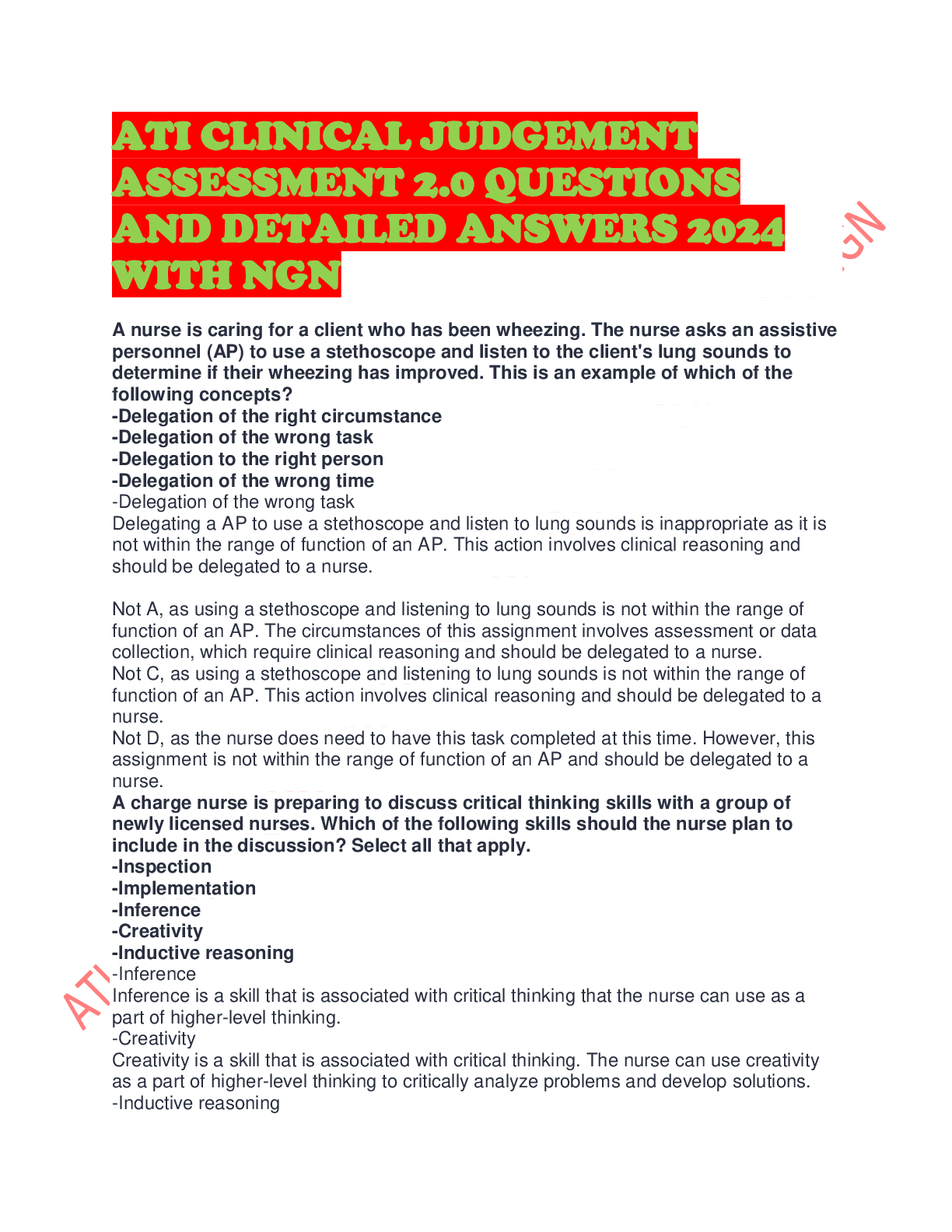
Buy this document to get the full access instantly
Instant Download Access after purchase
Buy NowInstant download
We Accept:

Reviews( 0 )
$17.00
Can't find what you want? Try our AI powered Search
Document information
Connected school, study & course
About the document
Uploaded On
Apr 12, 2024
Number of pages
5
Written in
Additional information
This document has been written for:
Uploaded
Apr 12, 2024
Downloads
0
Views
49

